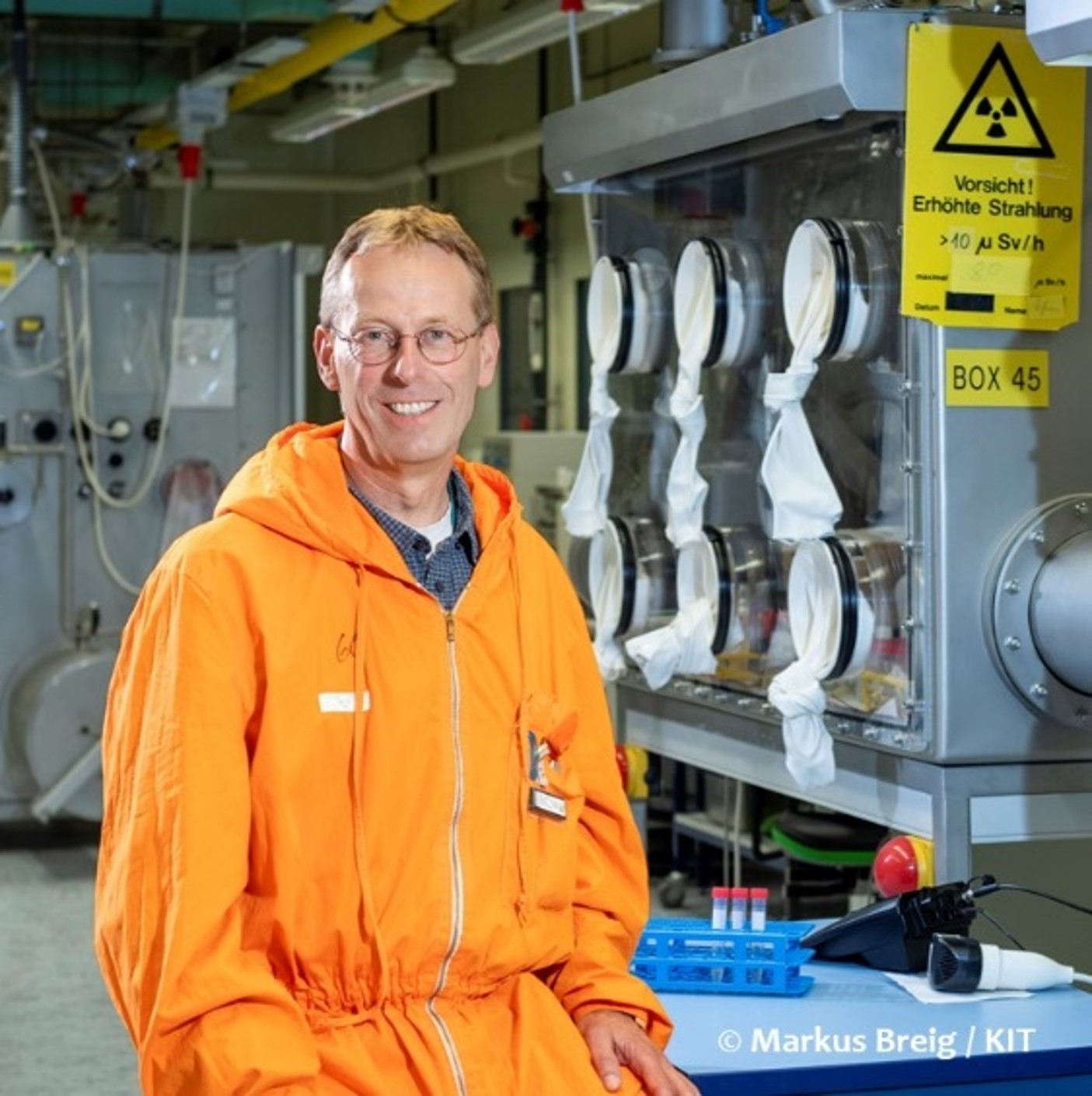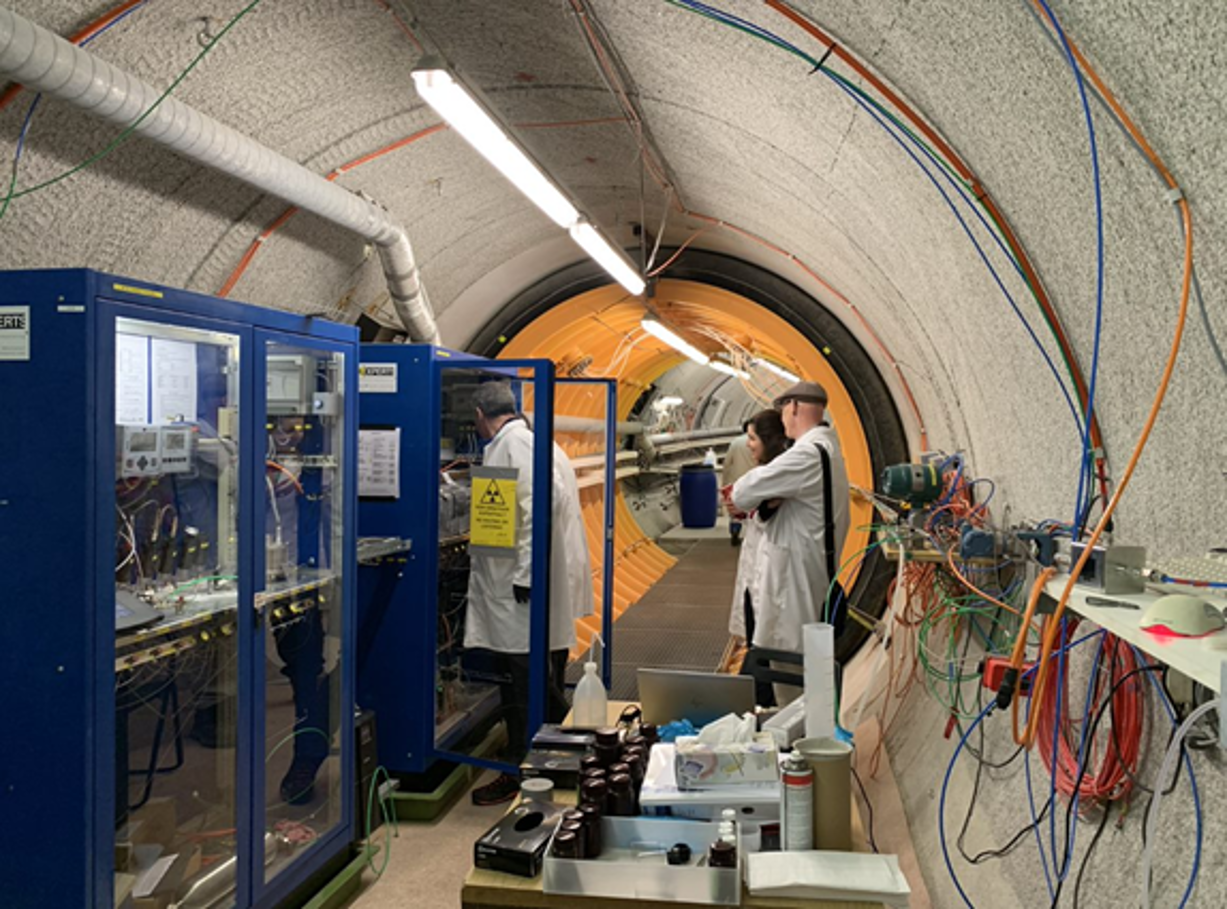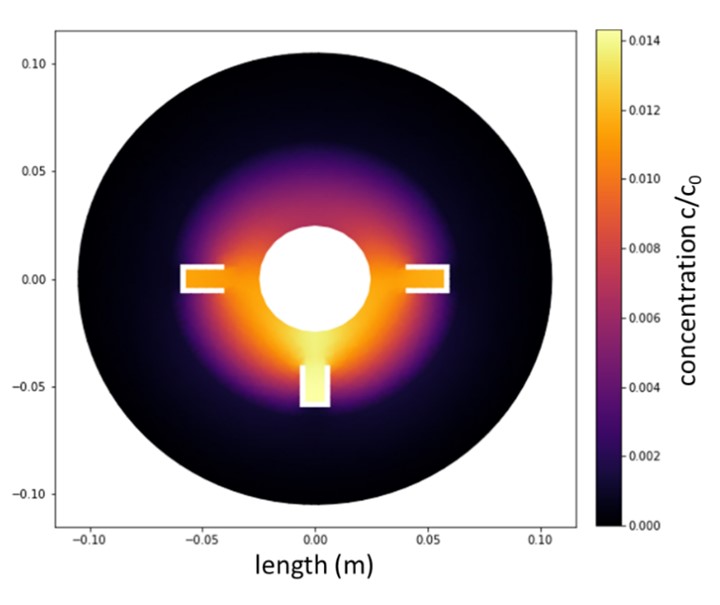Radioactive waste and barriers in repositories
|
Department head: Volker Metz, Ph.D.
+49 721 608 28078 |

Our research for nuclear waste management deals with various safety issues relevant in the pre-disposal phase, during waste emplacement and in the post-closure phase of a deep-geological repository. The majority of the research activities is currently focused on long-term safety of multi-barrier systems for disposal of nuclear waste in various host rocks.
Applied and fundamental studies are performed on subsystems (i.e. waste matrices, container materials, geo-engineered and geological barriers) of different repository concepts in argillaceous, crystalline and saline host rocks. These activities comprise a wide span of experimental and theoretical investigations concerning the behavior of low to high level waste (HLW) forms under repository conditions, radionuclide release from such waste products, evolution of the geochemical milieu in the near-field of a repository, alteration of container materials and geo-engineered barriers, radionuclide retention by near-field components of the repository and the adjacent host rock.
Studies are performed to assess the stability of high level waste such as spent nuclear fuel, HLW glass, activated steel and fuel rod claddings as well as the behavior of cemented (low / intermediate level) waste products in contact with different formation / groundwater types. In particular, the release of radionuclides from the waste products, subsequent speciation reactions in the water of the repository system and the interaction of the dissolved radionuclides with the various surfaces of the container materials, geotechnical and geological barriers are the focus of our investigations.
In principle, all these reactions can be simulated using geochemical modeling methods. By coupling the geochemical models with hydrodynamic or diffusion models, it is also possible to quantify the extent of potential radionuclide migration through the (geo-)technical barriers and the host rock. The goal of our work is the elucidation and numerical simulation of the speciation of radionuclides in aqueous solution and in contact with relevant minerals and other solid phases of the repository system.
When considering the timespan up to which a repository for high level waste can be provided, it becomes clear that interim storage of spent nuclear fuel and HLW glass will be necessary for many decades. The development of the integrity of fuel rods during dry interim storage over this long period of time is not sufficiently known. In this context, we are performing materials science and chemical studies into corrosion and embrittlement processes under dry interim storage conditions.
Furthermore, experiments with radiation sources and numerical simulation techniques are applied for assessing radiation fields in the vicinity of containers with high level wastes, the respective ambient dose and shielding requirements, as well as the individual dosimetry of personnel during storage in surface facilities and emplacement of the waste forms in deep geological repositories.
Scientific achievements of our investigations are applied to safety analyses, safety and disposal concept developments of current and future disposal projects as well as contributions to public information with respect to comparison of repository concepts in various host rocks. In the area of knowledge transfer to society, we work in interdisciplinary research projects on socio-technical issues relating to nuclear waste management paths and participate in numerous public events on interim storage and final disposal of nuclear waste.




